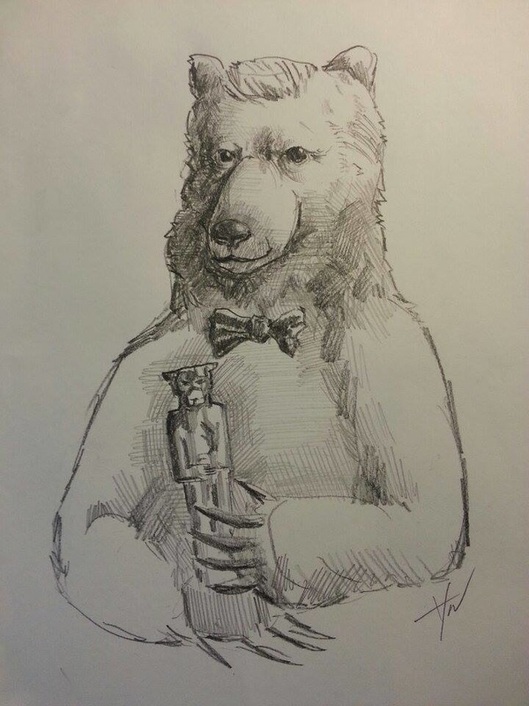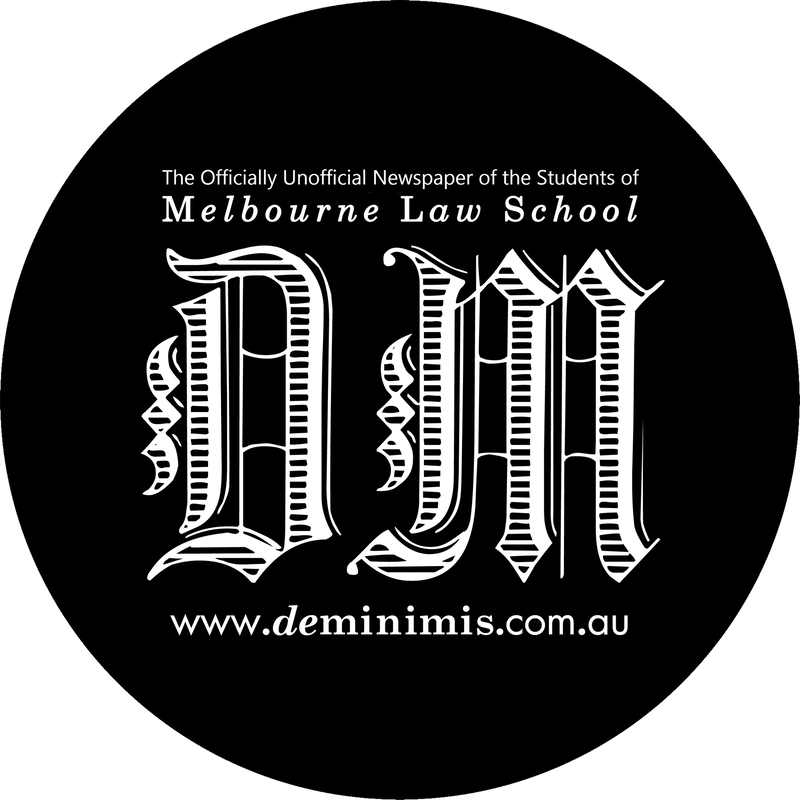|
SARAH GOEGAN & TOM MONOTTI Volume 9, Issue 3 Off the back of a stellar awards run, this week we review The Revenant, Alejandro González Iñárritu’s epic tale of survival on the American frontier, starring everyone’s favourite Oscars snub, (not anymore!!) Leonardo DiCaprio. Also this week, we review The Hateful Eight, the eighth film by Quentin Tarantino and The Big Short. The Revenant Sarah: I loved this film, which surprised me, as Iñárritu’s previous awards-hoovering film, Birdman, did absolutely nothing for me (but that’s a rant for another day). Of course, I have to give major kudos to our main man Leo, who really pulled out all the stops for the big one in this film, trading supermodels, private beaches and Dom Perignon for bison liver, horse carcasses and a mama bear who quite enjoys the taste of man-flesh. He perfectly conveys his character’s single-minded determination through a demanding physical role. The whole ordeal of it all is conveyed excellently on screen. The style is so naturalistic, from the use of natural lighting (except for one gorgeous shot depicting fire embers in the night sky which I later found was the only shot they used artificial lighting to enhance), to the pure, visceral displays of human endurance and brute, sheer will to survive. This was seen through both the mammoth feat Hugh Glass accomplishes to make it back to his men, but also through small elements, like the protagonist’s breath fogging up the camera lens, to his jaw-clenched, gritted teeth, saliva-expelling muffled sounds as he attempts to speak post-bear assault. I give The Revenant a 4.5/5. I’ll explain that half star off: at a couple of points in the movie, I felt it strayed too far down the overtly-deliberate-let’s-get-real-spiritual-and-introspective path. There were stretches of ‘visions’ Glass had involving religious iconography and Native American symbolism. Whilst the latter tended to fit with the narrative, I felt the former to be somewhat contrived at times, not to mention anachronistic (the religious images depicted on the dilapidated church were from differing artistic periods). Where I think Iñárritu does his best work is when he focuses on his craft, and his cast - here, assembling an incredible group of actors, and pushing them to their limits (special mention for my main man Tom Hardy, who pulls out the thickest Texan accent he can muster). It’s in those moments, rather than his attempts at complicating what is ultimately a simple plot, where the film shines. Tom: I agree, Sarah. From the opening tracking shot from cinematographer Emmanuelle Lubezki (he is the cameraman responsible for Children of Men, Gravity and in another Alejandro Inarittu collaboration, Birdman) we are thrown into a mesmerising world that is uncompromising and brutal, yet spotted with captivating scenery and natural wonder. Having won last year’s Oscar for Best Director, Alejandro Iñárritu is irrefutably a driven filmmaker to craft a work using natural light only, which extended the production time considerably. That the studio agreed to inject an additional $45 million to realise Iñárritu’s film says much about how highly regarded he is in Hollywood and how much faith they had in the final product. And he has delivered in that respect. I bet that this year is Leonardo DiCaprio’s year at the Oscars, whose performance demands little dialogue and great physical endurance (in one particular scene, he was swimming in water below zero degrees). The supporting cast is also excellent, their interactions fuelling Hugh Glass’ revenge story from the second act. Tom Hardy’s character may have left Hugh Glass to die, but we can relate to his situation given his previous trauma against Indians. Domnhall Gleeson also turns in a strong performance as Captain Andrew Henry, leader of the doomed expedition. I also give the film 4.5/5. That elusive half star is attributed to the film’s length- sometimes Inarritu strays and the plot can be unnecessarily protracted. At the same time, this works to emphasise the harrowing ordeal Hugh Glass goes through to survive and stagger the many miles back through Indian territory to the American frontier, making this a magnificent western epic. The Hateful Eight Sarah: Tarantino is my favourite director, and I’m one of those weird people who laughs at excessive violence in films. So of course I booked advance tickets to see The Hateful Eight in glorious 70mm Ultra Panavision. I wish I could say it was everything I hoped for, but it wasn’t. That’s not to say it wasn’t good - I still saw someone’s head explode and fake blood being used in ways I never dreamt of. But there were two major problems. First, though Tarantino’s violence could never be considered proportionate to the circumstances, I feel it has always tied in well with the plot. Here, it felt like somewhat of a cop-out to cut through the long running time. The cast originally read the script at a theatre, and The Hateful Eight does feel like it would have done well as a play. The tension-building dialogue, written and performed excellently, and the dominant setting of a single room (which at times negated the effect of the widescreen film), made me wonder what it would have been like as a theatre performance. Second, the plot didn’t deliver the final punch the way it should have. Unlike Tom, I felt the third act was unclimactic. His ending did not satisfy; the film’s resolution was over all too quickly, and felt like little payoff after having taken viewers on such a long ride. However, the first two thirds of the film were excellent - Tarantino takes his time to establish each of his characters’ personalities, and build the mystery. This was complemented by Ennio Morricone’s wonderful score. Overall, The Hateful Eight shows a director refining his skill, in an homage to the spaghetti western. Despite its flaws, I still enjoyed it, and really, there must be some applause given to anyone in Hollywood nowadays who actually creates original work, so it gets a 3.5/5 from me. Tom: Quentin Tarantino relishes slow burn thrills. In every scene he establishes an ensemble of eccentric characters, and with meticulous use of plot devices creates conflicts which often result in a crescendo of staccato-burst violence. His latest film throws Kurt Russell, Samuel L. Jackson, Tim Roth and five others into Minnie’s Haberdashery and lets their personalities fester into confrontation, evolving around bounty hunter Kurt Russell and his prisoner, played by Jennifer Jason Leigh. The original film, presented in 70mm Panavision, has a length of about three hours, including an overture (composed by famous spaghetti western composer Ennio Morricone) and an interlude. The film is shouting “epic” from the get-go, yet this is probably Tarantino’s least accomplished work. I agree with Sarah that there is good dialogue, but the use of over-the-top violence which so often complements his films jars with the subtlety which makes the character interactions so ominous. In addition, the buildup is dampened by a flashback scene which would have enhanced the tension of the film if it was removed. The Hateful Eight feels more like a play than a film, and sometimes implying. While Quentin Tarantino often brings out amazing performances from his actors and actresses, I felt Jennifer Jason Leigh’s performance is overstated, Samuel L. Jackson is playing Samuel L. Jackson, and Walton Goggins’ turn as a hillbilly sheriff is very similar to that of another performance in the underrated TV show, Justified. Still, there is much to like in this film, particularly in the second half. I give it three out of five stars. The Big Short Director Adam McKay has been known for several Will Ferrell productions, including Anchorman, Talladega Nights and The Other Guys. In The Big Short, he steps into new territory, crafting a smart dramedy that delves into the origins of the Global Financial Crisis. The film evolves around three groups of characters. Michael Burry (played by Christian Bale) makes a discovery that American mortgage-backed securities are composed almost entirely by cheap, subprime mortgages which are going to fail. His decision to bet against the market on behalf of the investors of a PE firm flies against convention. Nevertheless, his research precipitates others to follow suit, including misanthrope Mark Baum (Steve Carrell), Jared Vennett (Ryan Gosling) an ex-investment banker Ben Rickert (Brad Pitt). The film attempts to explain some complicated financial concepts, which Adam McKay keeps fresh with the assistance of several cameo performances (such as Margot Robbie and Selena Gomez) as well as a funny scene involving jenga. It lauds bankers as arrogant, immoral and stupid as a means to generate humour while fusing the tension for the ultimate climax. While the film has some sharp one-liners, the end result is far from funny, and Charles Randolph’s screenplay expertly navigates between two stories- one about a group of men undermining a corrupt financial system, and a story about the same characters profiting from the GFC. Steve Carrel is particularly staggering as a banker who considers ethics to be a fundamental constituent of the financial services profession. Ryan Gosling also delivers a great performance as an arrogant banker who likes to yell abuse at his assistant analyst. The film did seem a bit too emotionally charged for my liking, but that was a small discrepancy in what was otherwise a fine film. Banking may not seem a film-worthy subject, but in this case it was presented in an engaging and fun way. I give this film four out of five stars. Sarah & Tom are third-year JD students More De Minimis!
Other Articles Like This: Also in Issue 3: The Level Two Fountain: Students Hail False Prophet Scott Colvin A Food Co-op for MLS? Duncan Wallace The Clerkship Diaries: Mission Indispensable Miss Sian Indispensable Why We Like It When Leo Wins Timothy Sarder A Really Weird Show: A Month in Kununurra, WA – Part 2 of 2 David Allinson Comments are closed.
|
Archives
October 2022
|



